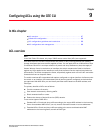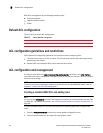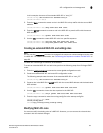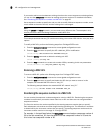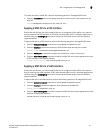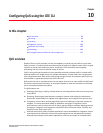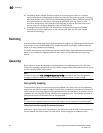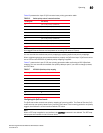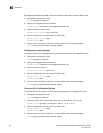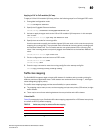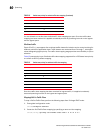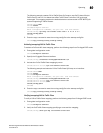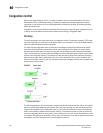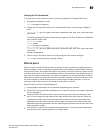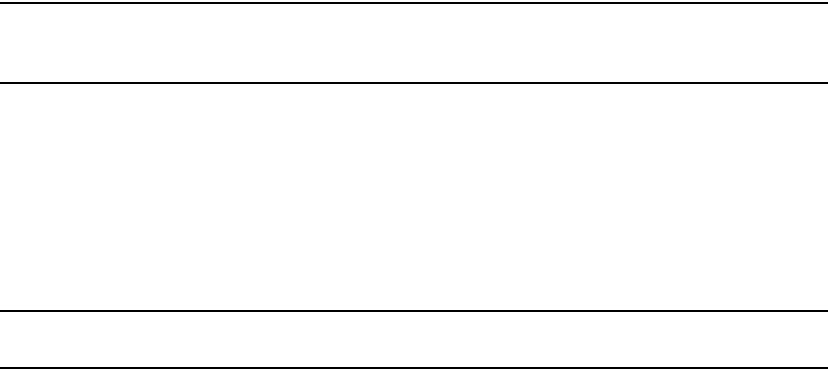
94 Dell Converged Enhanced Ethernet Administrator’s Guide
53-1002116-01
Rewriting
10
• Scheduling—When multiple queues are active and contending for output on a common
physical port the scheduling algorithm selects the order the queues are serviced. Scheduling
algorithms include Strict Priority (SP) and Deficit Weighted Round Robin (DWRR) queueing. The
scheduler supports a hybrid policy combining SP and DWRR servicing. Under a hybrid
scheduler configuration, the highest priority queues are serviced by SP while lower priority
queues share the remaining bandwidth using the DWRR service.
• Converged Enhanced Ethernet—CEE describes an enhanced Ethernet that will enable
convergence of various applications in data centers (LAN, SAN, and IPC) onto a single
interconnect technology.
Rewriting
Rewriting a frame header field is typically performed by an edge device. Rewriting occurs on frames
as they enter or exit a network because the neighboring device is untrusted, unable to mark the
frame, or is using a different QoS mapping.
The frame rewriting rules set the Ethernet CoS and VLAN ID fields. Egress Ethernet CoS rewriting is
based on the user-priority mapping derived for each frame as described later in the queueing
section.
Queueing
Queue selection begins by mapping an incoming frame to a configured user priority, then each
user-priority mapping is assigned to one of the switch’s eight unicast traffic class queues or one of
the four multicast traffic class queues.
NOTE
You need to enter the copy running-config startup-config command to save your configuration
changes to NVRAM so that they are not lost if there is a system reload or power outage.
User-priority mapping
There are several ways an incoming frame can be mapped into a user-priority. If the neighboring
devices are untrusted or unable to properly set QoS, then the interface is considered untrusted. All
traffic must be user-priority mapped using explicit policies for the interface to be trusted; if it is not
mapped in this way, the iEEE 802.1Q default-priority mapping is used. If an interface is trusted to
have QoS set then the CoS header field can be interpreted.
NOTE
The user priority mapping described in this section applies to both unicast and multicast traffic.
Default user-priority mappings for untrusted interfaces
When Layer 2 QoS trust is set to untrusted then the default is to map all Layer 2 switched traffic to
the port default user priority value of 0 (best effort), unless configured to a different value.




